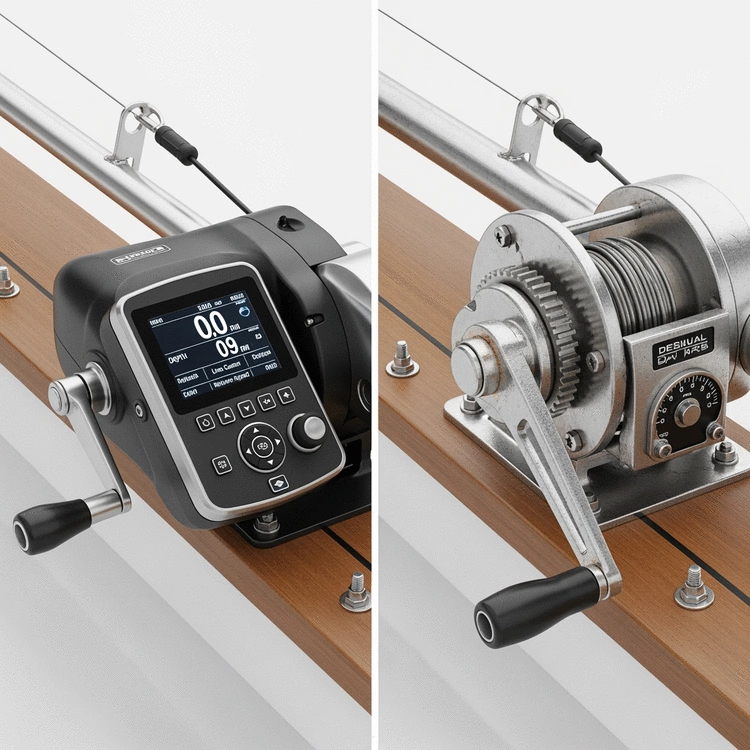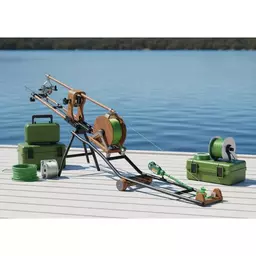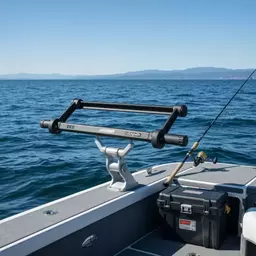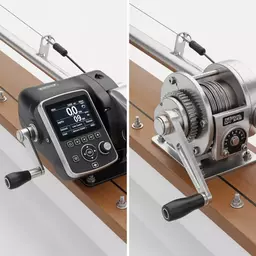Choosing the right downrigger for your fishing adventures can be a game changer. As you explore the distinctions between electric and manual models, consider how these devices can enhance your overall experience on the water.
What You Will Learn
- The fundamental mechanics of downriggers and how they improve your fishing efficiency.
- Key differences between electric and manual downriggers, including ease of use and retrieval control.
- The importance of retrieval speed and depth control for targeting specific fish species.
- How to enhance your downrigger setup with essential accessories for better performance.
- Factors to consider when purchasing a downrigger, including fishing environment and target species.
- The value of user reviews and expert advice in making informed purchasing decisions.
Electric vs. Manual Downriggers: Key Feature Comparison
This comparison highlights the primary differences and considerations when choosing between electric and manual downriggers, focusing on aspects that impact fishing efficiency and experience. For a deeper dive into selecting the perfect model for your needs, explore our guide on selecting the right downrigger.
Electric Downrigger Advantages
- ✓Ease of Use: Push-button operation, ideal for beginners or solo anglers.
- ✓Faster Retrieval: Quickly adjust depth during active feeding.
- ✓Precise Depth Control: Digital displays for accurate monitoring.
- ✓Versatile Mounting: Suits a wider range of boat types.
Manual Downrigger Advantages
- ✓Controlled Retrieval: More direct feel and control over line.
- ✓Cost-Effective: Generally more affordable initial investment.
- ✓Simpler Mechanics: Fewer electronic parts, less prone to electrical issues.
- ✓Durability: Often robust due to simpler construction.
Understanding the Differences: Electric vs Manual Downriggers
When it comes to optimizing your fishing experience, understanding the nuances between electric and manual downriggers is essential. These tools are designed to help you fish more effectively by getting your bait to the desired depth, where the fish are lurking. But what's the difference between the two types, and which one is right for you? In this section, we’ll dive into the mechanics and features of each, helping you make an informed choice that complements your fishing style.
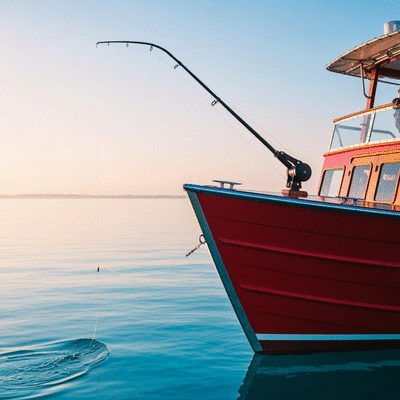
What Are Downriggers and How Do They Work?
Downriggers are essential tools for serious anglers looking to maximize their fishing success. They consist of a spool of line with a weight attached to it, allowing you to control the depth of your bait and lure. This technology provides greater precision, which is crucial for targeting specific fish species that prefer certain depths. Typically, the weight is released into the water, and your bait is attached to a release clip that allows it to swim freely.
To get started with downriggers, it's important to consider how they can enhance your fishing. With the right setup, you'll find that downriggers can significantly increase your chances of landing that trophy fish!
Key Features: Comparing Electric and Manual Models
When deciding between electric and manual downriggers, it's essential to understand their key features. Each type offers unique advantages and drawbacks, which can greatly affect your overall fishing experience. Here's a quick comparison of the two:
- Electric Downriggers: Operated with a push of a button, making them easier to use, especially for beginners or solo anglers.
- Manual Downriggers: Operated by hand, offering more control over the retrieval process but requiring more effort.
Understanding these features can help you match the right downrigger to your personal fishing style. Each model type has its place in the world of fishing, catering to different preferences and situations. For troubleshooting common issues with either type, refer to our common downrigger troubleshooting tips.
Retrieval Speed: How Does It Affect Your Fishing?
Retrieval speed can have a significant impact on your fishing success. Electric downriggers typically offer faster retrieval speeds, allowing you to quickly adjust your depth as needed. This can be particularly beneficial during active feeding times when fish are more likely to bite. On the other hand, manual downriggers allow for more controlled retrieval, giving you time to assess the situation before bringing in your line.
Depth Control and Precision
Both electric and manual downriggers excel in depth control, but electric models generally provide more precise settings. With digital displays, you can easily monitor and adjust your depth without having to guess or check frequently. Manual models, while offering great depth control, rely more on your instincts and experience to gauge optimal depths.
Mounting Options and Compatibility
Another key consideration is the mounting options available for each type. Electric downriggers often come with more versatile mounting solutions, making them suitable for a wider range of boat types. Manual models can also be mounted easily but may require additional accessories to ensure compatibility with your setup. Before purchasing, check your boat's specifications to ensure a perfect fit!
Fishing Accessories to Enhance Your Downrigger Setup
Enhancing your downrigger setup with the right accessories can make a world of difference! Here are some accessories to consider:
- Downrigger releases for smoother hookups
- Weight bags to optimize weight and stability
- Swivels and snap swivels for easy changes
- Depth counters for precise tracking
Adding these accessories not only improves your fishing efficiency but also ensures that you’re fully prepared for any situation on the water!

Analyzing Use Cases for Electric and Manual Downriggers
Now that we've covered the fundamental differences, let’s explore specific scenarios in which each type shines. Knowing when and where to use your downrigger can greatly enhance your fishing experience, making it more enjoyable and successful!
Pro Tip
When using downriggers, consider the importance of maintaining a steady speed while retrieving your line. A consistent speed can help keep your bait at the optimal depth, making it more enticing to fish. Additionally, using a quality downrigger release can enhance your catch rate by minimizing tension on the line, allowing fish to bite more freely.
Making Your Decision: What to Consider Before Buying
Choosing the right downrigger can feel overwhelming, especially with so many options out there. But don't worry! At Downrigger Insights, I'm here to help simplify the process. I always recommend that anglers utilize a decision-making framework tailored to their unique fishing needs. This approach ensures that each purchase is not just a shot in the dark but a well-thought-out investment in enhancing your fishing experience! For more insights into maintaining your equipment, read our guide on downrigger care tips for anglers.
Utilizing a Decision-Making Framework for Your Fishing Needs
Before diving into a purchase, consider what you truly need from your downrigger. Start with a checklist that highlights your specific requirements. This could include factors such as:
- Fishing Environment: Will you be fishing in freshwater or saltwater?
- Target Species: What fish are you aiming to catch?
- Boat Size: How large is your vessel, and what kind of mounting options will work best?
- Budget: How much are you willing to invest?
These criteria will help guide your decision-making process. By keeping your priorities straight, you can narrow down your options and make an informed choice!
Checklists for Choosing the Right Downrigger
When assessing different models, having a checklist can make all the difference. Here’s a quick guide to help you evaluate:
- Ease of Use: Is the downrigger user-friendly?
- Durability: Is it built to withstand tough conditions?
- Retrieval Speed: Will it efficiently bring in your catch?
- Customer Support: Does the manufacturer offer good service and warranty?
Using this checklist ensures that you focus on essential features that will enhance your fishing adventures!
Exploring Fishing Equipment Trends to Inform Your Purchase
Staying updated on the latest trends in fishing equipment can provide valuable insights. New technologies and designs may significantly enhance your fishing experience. Pay attention to:
- Recent innovations in downrigger technology
- Feedback from the fishing community about new models
- Environmental impacts of different downrigger types
By exploring these trends, you can make a more informed decision that aligns with current fishing practices and sustainability efforts!
Gathering Insights from Real-World Experiences
Now that you have a framework for your decision, it's essential to gather insights from fellow anglers. Real-world experiences can provide clarity and confidence in your choice!
User Reviews and Testimonials: What Anglers Are Saying
Don't underestimate the power of user reviews! Many anglers share their hands-on experiences, and these insights can reveal vital information about downrigger performance. Look for reviews that highlight:
- Ease of installation and setup
- Effectiveness in various fishing conditions
- Long-term reliability and maintenance needs
Reading through these testimonials can save you time and help you avoid potential pitfalls!
Expert Quotes: Advice from Seasoned Fishermen
Listening to seasoned fishermen can also offer a wealth of knowledge. Their advice often stems from years of experience and trial and error. Seek out expert quotes or articles where they discuss:
- Key features to look for in a downrigger
- Common mistakes anglers make when choosing
- Personal success stories that relate to specific models
Incorporating expert opinions into your decision-making process only enhances your confidence in your selection!
Fishing Product Reviews: Evaluating Performance and Value
Finally, take the time to read fishing product reviews that detail performance and value. These evaluations often include comprehensive comparisons, helping you see side-by-side differences between models. Look for:
- Performance ratings
- Value for money
- User experiences in specific fishing scenarios
By leveraging this information, you're setting yourself up for a successful purchase that will enhance your fishing trips for years to come!
Recap of Key Points
Here is a quick recap of the important points discussed in the article:
- Understanding Downriggers: Downriggers help anglers control bait depth, increasing the chances of catching fish.
- Electric vs Manual: Electric models offer ease of use, while manual models provide more control and require more effort.
- Retrieval Speed: Electric downriggers allow for faster adjustments, beneficial during active feeding times.
- Depth Control: Electric models offer more precise depth settings with digital displays, while manual models rely on experience.
- Mounting Options: Electric downriggers typically have more versatile mounting solutions than manual ones.
- Essential Accessories: Consider adding downrigger releases, weight bags, swivels, and depth counters to enhance your setup.
- Decision-Making Framework: Evaluate your fishing environment, target species, boat size, and budget before purchasing.
Frequently Asked Questions (FAQs)
What is the primary difference between electric and manual downriggers?
Electric downriggers operate with push-button controls, offering ease of use and faster retrieval, ideal for beginners or solo anglers. Manual downriggers are hand-operated, providing more direct control over the line and often being more cost-effective.
How do downriggers improve fishing efficiency?
Downriggers allow anglers to precisely control the depth of their bait and lures, ensuring they are presented in the strike zone where target fish species are most likely to be found. This precision significantly increases the chances of a successful catch.
Which type of downrigger offers more precise depth control?
Electric downriggers generally offer more precise depth control due to digital displays that allow for accurate monitoring and adjustments. Manual models also provide good depth control, but rely more on the angler's experience and judgment.
What accessories are recommended to enhance a downrigger setup?
Recommended accessories include downrigger releases for smoother hookups, weight bags for optimal stability, swivels and snap swivels for easy lure changes, and depth counters for precise tracking of your bait's position.
What factors should I consider before buying a downrigger?
Before purchasing, consider your fishing environment (freshwater or saltwater), target species, boat size and compatible mounting options, and your budget. Utilizing a decision-making framework based on these factors will help you make an informed choice.
